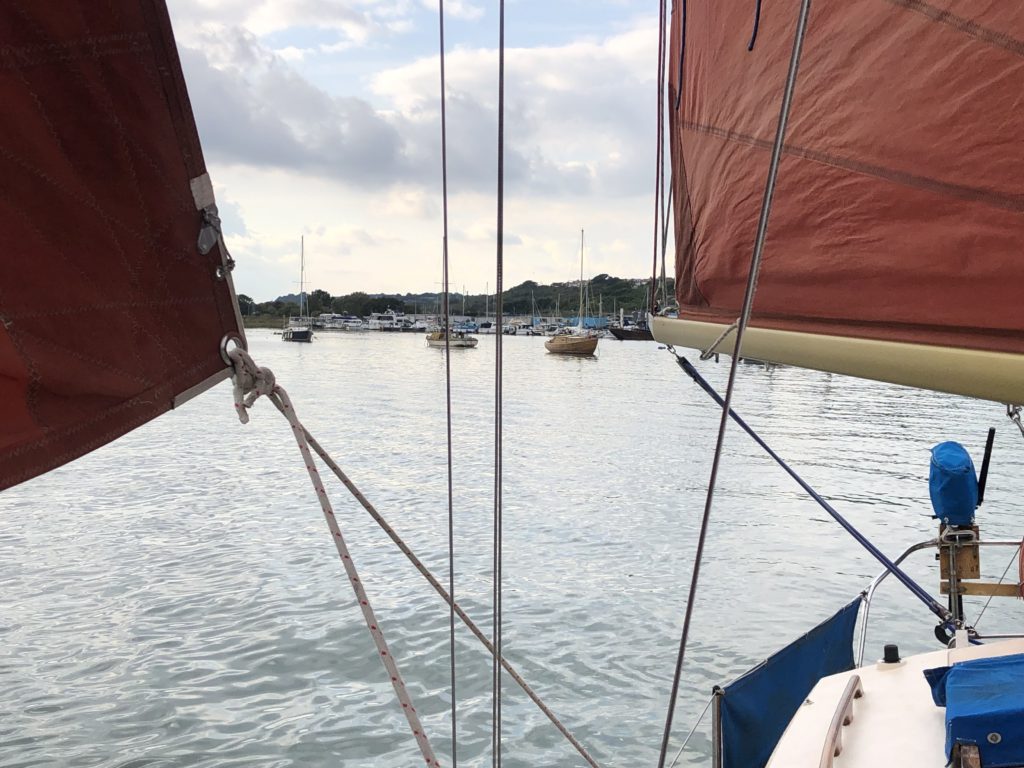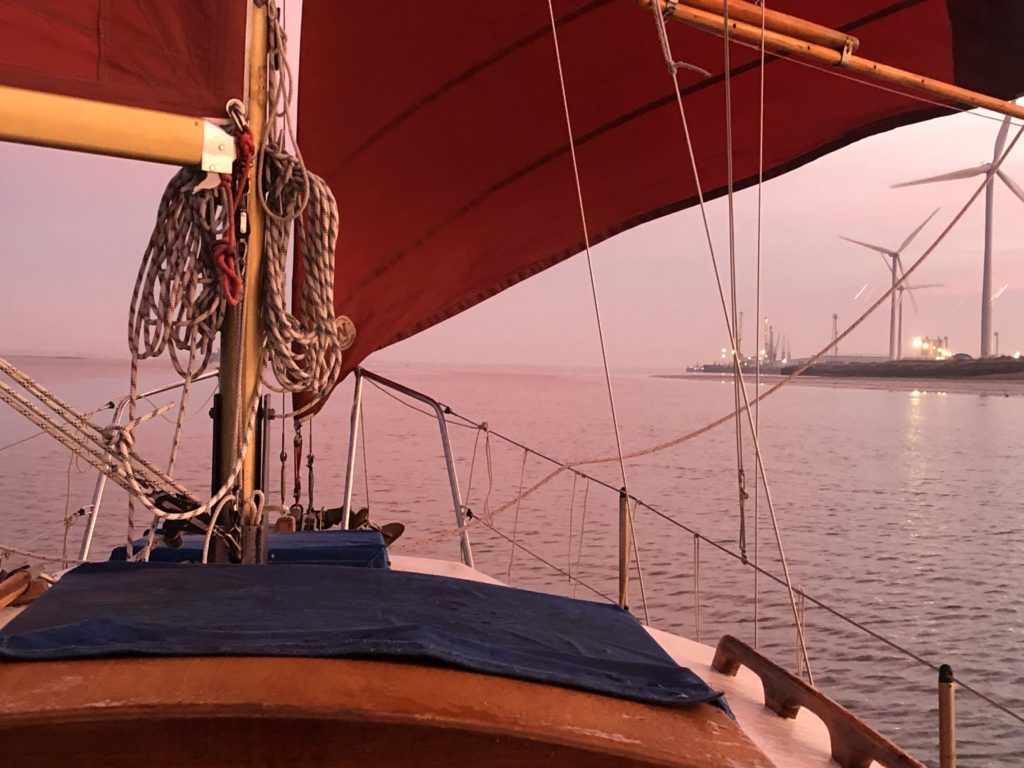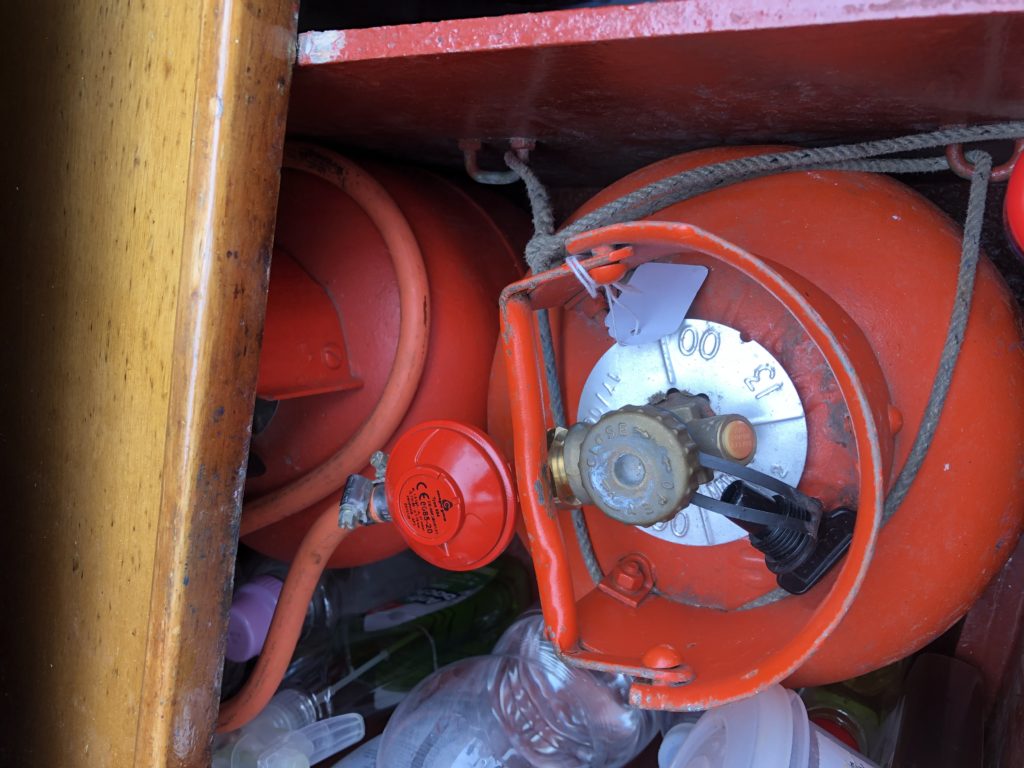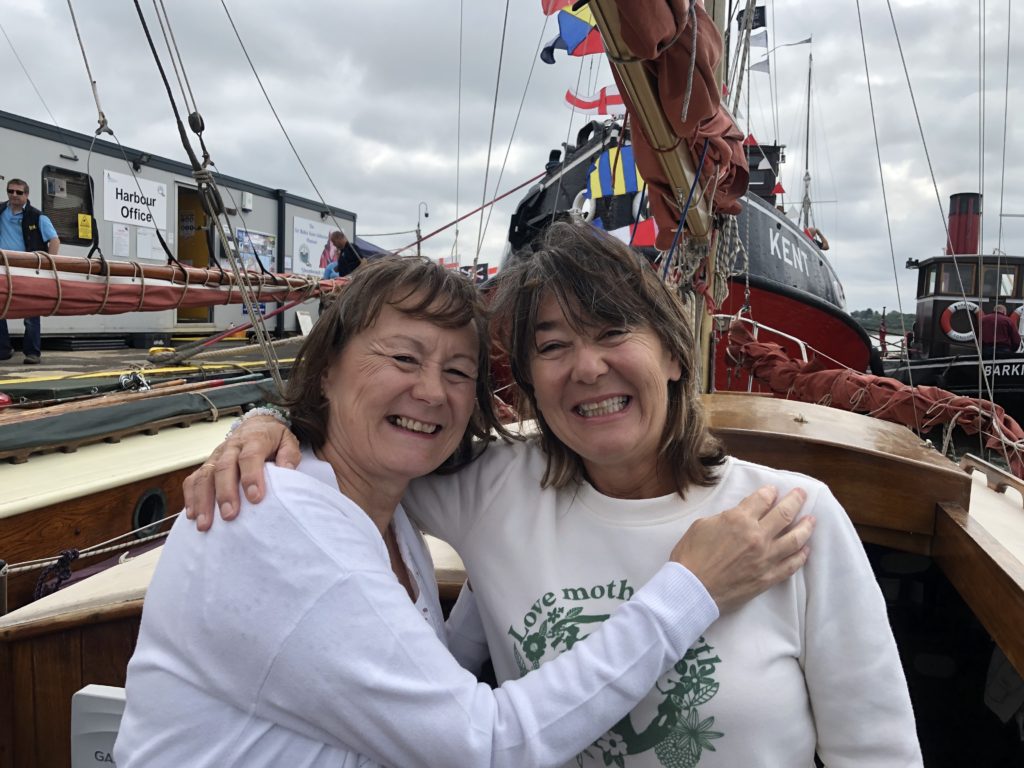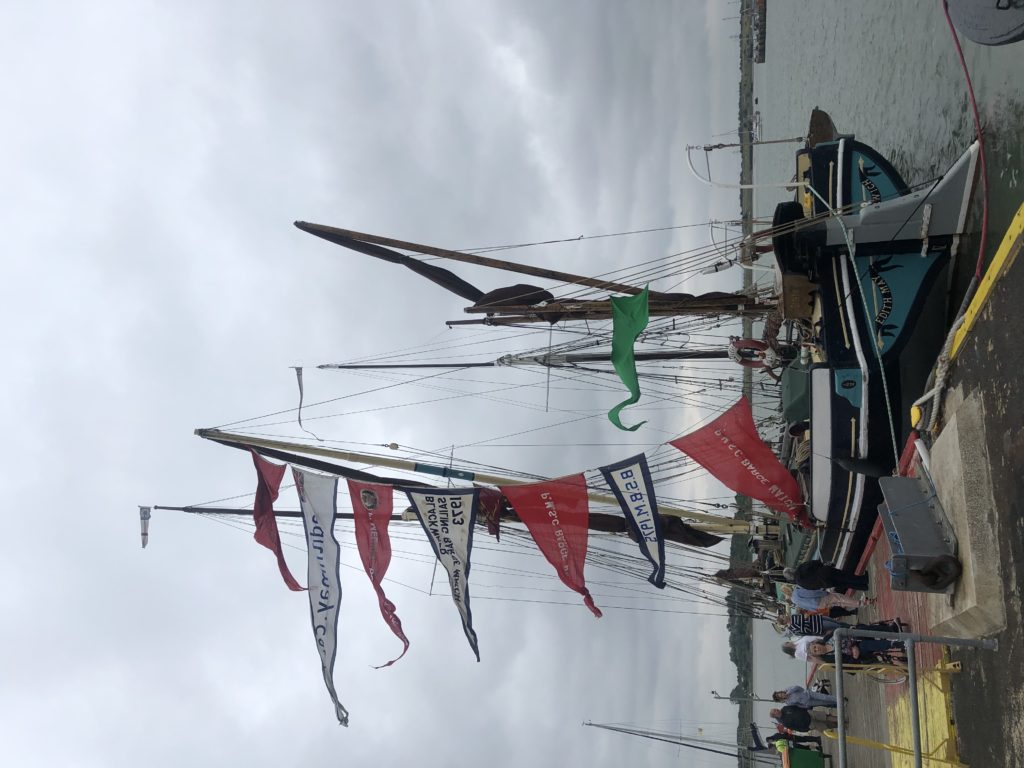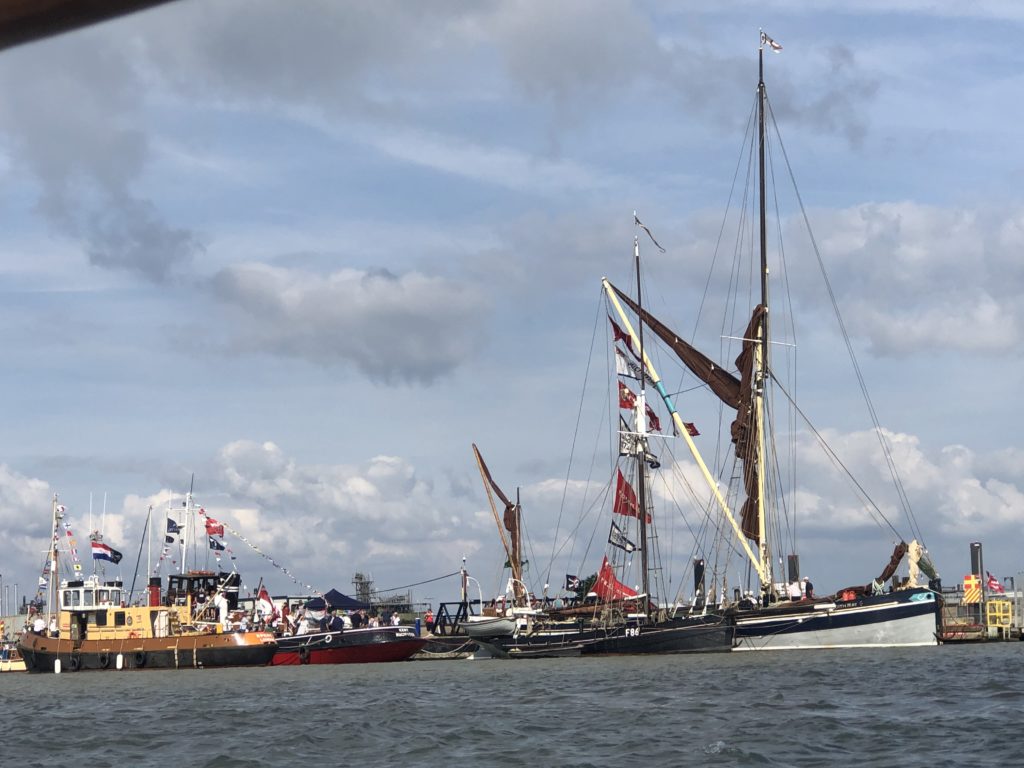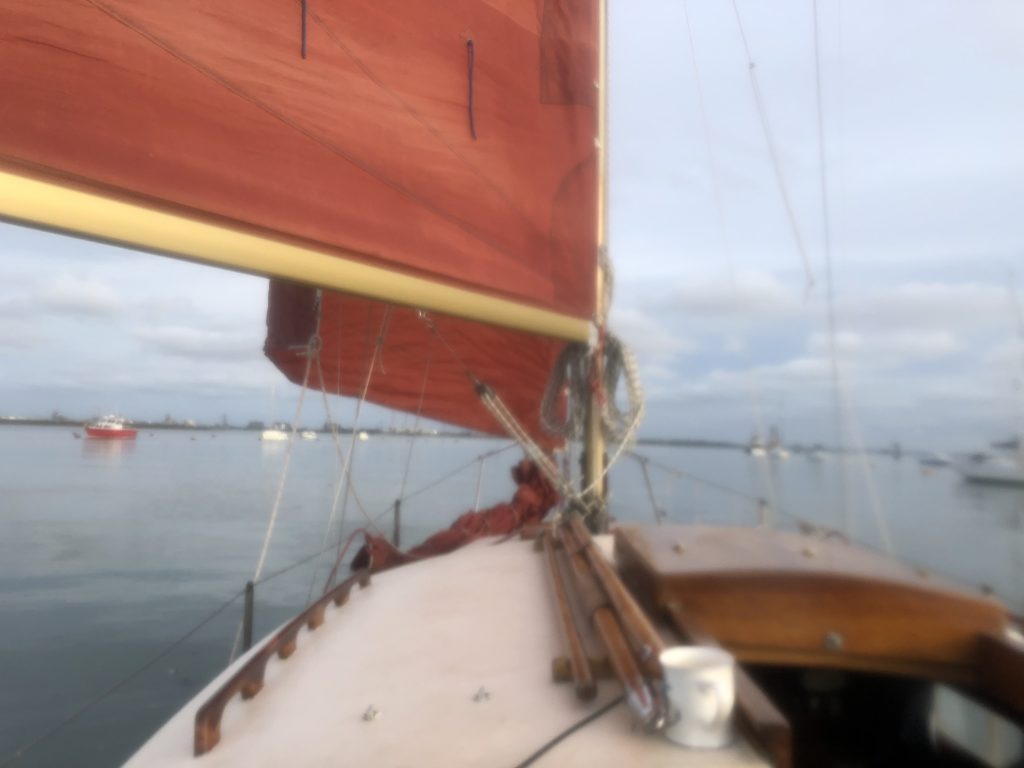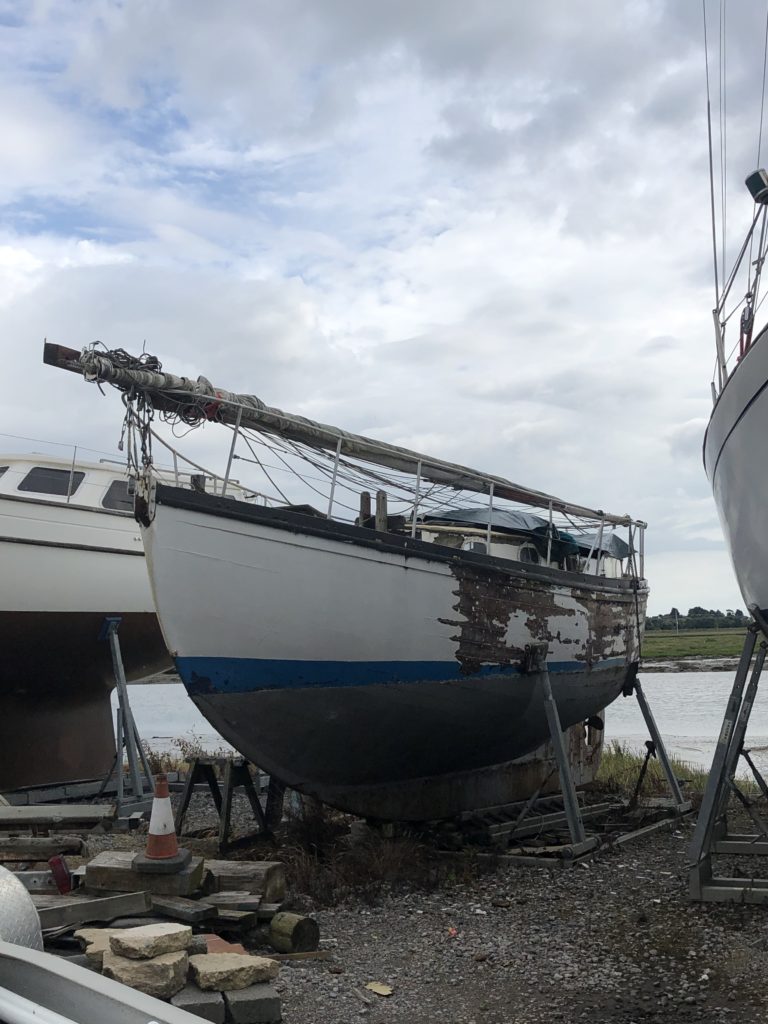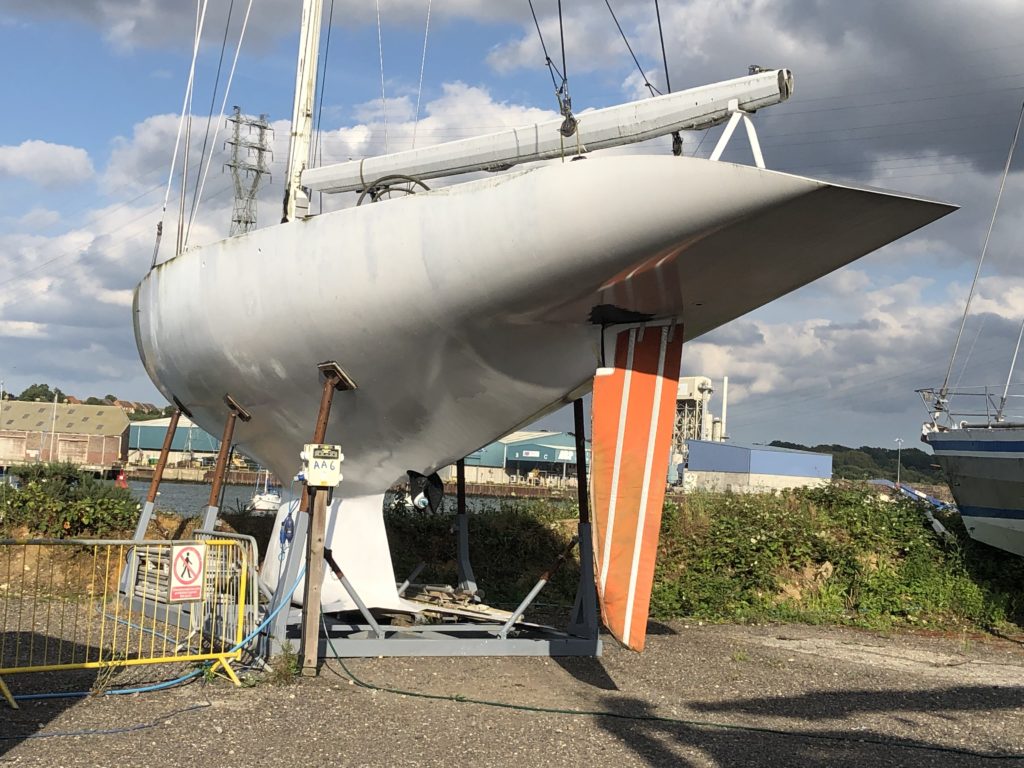Ditch-crawler remembers some old ‘smacks’ met this season…
During August, we’d popped up into St Osyth for a night after booking a berth with the yard at the head of the creek – home port of the spritsail barge EDME. Upon leaving we had a night in Brightlingsea to use the shower facilities and get a ‘shed load’ of laundry done!
There are a couple of smacks up at St Osyth, but it was at Brightlingsea I am ‘sailing’ to… The mate stood by during the laundry exercise more than I did, happy with her book! I was ‘sent off’ to have a poke round the waterfront…

At the heritage dock I met a couple of chaps who were just about to leave the site after a spell aboard the 1885 built smack Victory. One of the chaps had purchased her, he said, grinning. She has a ‘Thames’ number, LO111, but was built by Howard of Maldon.
I was told that it was thought she was used as a trading vessel in earlier days working for a miller on the River Blackwater up at Maldon. I wondered if this was Greens?
The old thing had lain for years up at Wivenhoe in a mud hole along the front. I remember seeing her looking rather dilapidated. Her gear eventually ‘fell down’ due to a rotten mast.

She was moved down to Brigtlingsea after being given to the smack society with the intention of making her available to a ‘fitted person’ who could undertake her rebuild. The new owner had had thoughts of motoring her round down the Swin, but the decision was made not to. Rather wise, I thought!
Her new owner said she was due to be lifted out and transported to a workshop in Erith – they being Erith YC members. The Victory is to be completely rebuilt under cover…

Another vessel in a seriously bad way was still floating. Her hull looked ripe with rot and her decks certainly were. I didn’t find out her name.
Leaving the heritage dock, I briefly looked over to the spritsail barge Dawn which was under cover having deck maintenance – re-caulking – having chosen to continue her Covid-19 sojourn…
I wandered into Morgans Yard to look at vessels in the lay up area. A few old friends were found including the bare empty and rather forlorn hull of the Colchester smack Shamrock.
At the time I thought her days were numbered, however, the very next day he old thing was loaded onto a lorry and taken to the St Osyths boat Yard for a complete rebuild.


The vessel was largely held together with strong webbing straps in an effort to maintain shape, and, I believe, just to hold her constituent parts together.
All in all, these are happy tales…
Another such tale has taken the Maldon bawley MN2, Dorana, to Eyemouth, Berwickshire, for a rebuild at a yard in the old fishing village in the Scottish Borders.
I am endeavouring to find out a little more, but no response from the local heritage centre has been forthcoming currently…
Dorana is 34′ and actually quite young: being constructed by Drake’s of Tollesbury in 1939. She has an upright transom, bawley-like, rather than the traditional highly raked Colchester type.

The vessel is similar to the Joseph T, another Maldon vessel which lay ashore at Maylandsea for many years. She was broken up last year…

Smacks and Bawley’s are always a delight to see, as are all traditional craft and owners should be applauded for their loving care and tenacity in keeping their little ships in such fine order.

I’ll certainly be looking out for the Shamrock and the Victory over the next couple of seasons…
More on the Dorana: She is indeed in Eyemouth. I contacted the town’s museum who put me onto the local boat yard. I had a response from the Marine Manager of the yard, Graham Perrins.
Graham tells me that the smack was purchased by a ‘local business man and is working on the boat at his own leisure…’
I am sure the smack world will keep in touch.





